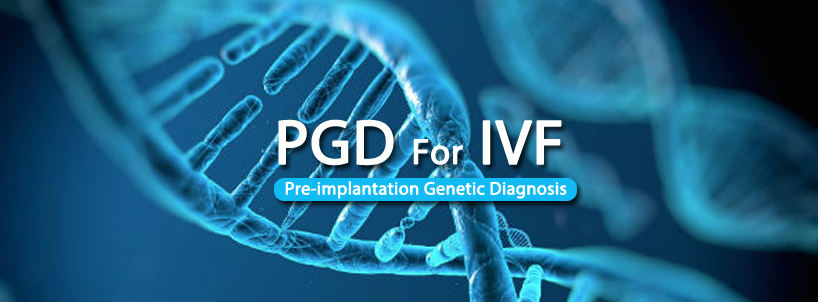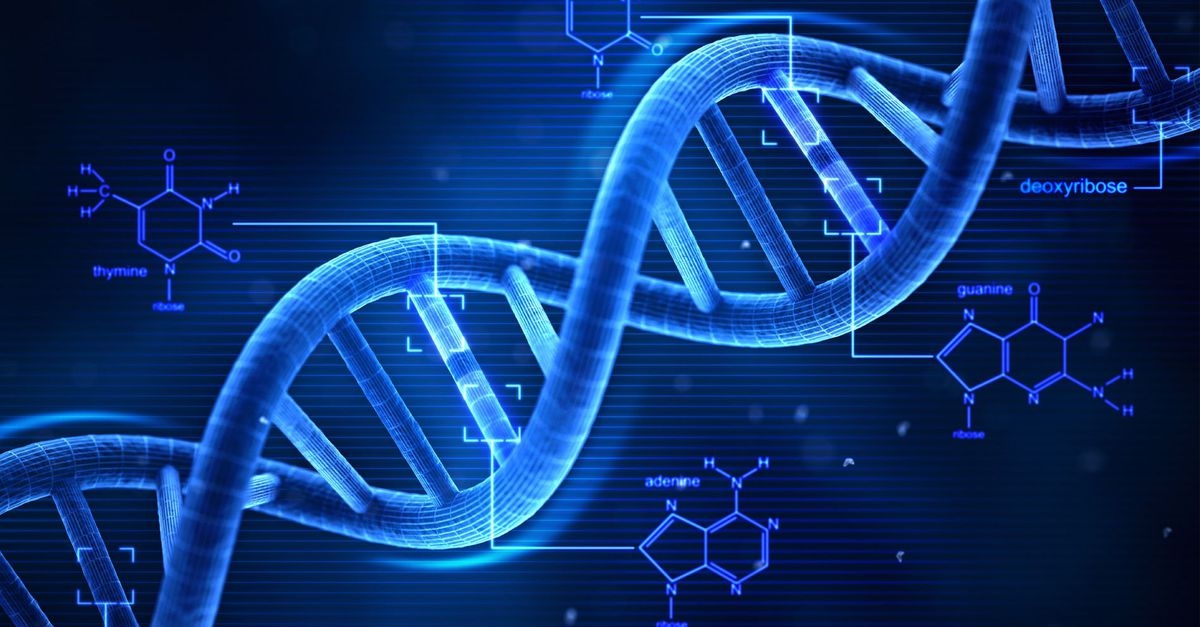Home | Services | Genetic Screening
PGD, PGS, and NGS Genetic Screening
Asia Egg Donors with our parent company, Laos Fertility (laosfertility.com) offers genetic screening by utilizing the advances made in PGD (Preimplantation Genetic Diagnosis), PGS (Preimplantation Genetic Screening), and NGS (Next-Generation Sequencing) procedures. These screening tests allow intended parents to ensure their future baby will not have any birth defects or genetic abnormalities. These tests help eliminate risks during the IVF process and also increases pregnancy rates greatly. Many times as much as 50% or more.
Preimplantation Genetic Diagnosis (PGD)
Preimplantation genetic diagnosis (PGD) is a medical procedure that is done before implanting the embryos/s into a woman's uterus. This screening test can identify genetic defects in the embryos. PGD can prevent certain genetic diseases or disorders from being passed on to the unborn baby. Intended parents' embryos that are used in the PGD procedure are made during the In Vitro Fertilization (IVF) process.
How is PGD done?
Preimplantation Genetic Diagnosis is typically performed after the embryos reach Blastocyst stage usually on day 5 or day 6 after intended parents' embryos are created through IFV process which includes egg retrieval, fertilization, and growing the embryos in the laboratory.
4 Steps to Preimplantation Genetic Diagnosis:
- Step four is when the Embryologist has identified a healthy embryo that is free of genetic problems and the IVF doctor implants one or two such embryos into the woman's uterus. After 7 to 10 days, a pregnancy test is done to determine a positive or negative pregnancy.
- Step two is when the DNA of the embryo is checked and evaluated to see if there are any problematic genes that are found in the embryo. This test usually takes a week to 10 days to receive the report back from the lab.
- Step three involves freezing the rest of the tested embryos. Thus, keeping the good ones and destroying the embryos that had genetic issues or were problematic.
- The first step involves removing a single cell from a previously frozen embryo on day 5 or day 6 when it reachesBlastocyst stage.
Who can benefit from PGD?
Preimplantation Genetic Diagnosis testing benefits any intended parent/s from the risk of passing on a genetic disease or condition.
Individuals who are possible candidates for PGD include:
- Carriers of sex linked genetic disorders;
- Carriers of single gene disorders;
- People that have chromosomal disorders;
- Women who are 35 years or older (Most common);
- Women who have had recurring pregnancy loss or miscarriage;
- Women that have had past failed fertility treatments.
PGD has is also popular way to do gender selection which helps balance a healthy family. For instance, a couple may have 3 girls and desire a boy. PGD is also popular in some cultures where a certain sex may be preferred.
What are the benefits of PGD?
Preimplantation Genetic Diagnosis can test for over a hundred different genetic disorders;
Preimplantation Genetic Diagnosis is done before implanting the embryo/s which allows the intended parents to decide if they want to continue with the pregnancy;
Preimplantation Genetic Diagnosis allows intended parents to have biological children who might not have be able to do so otherwise.

Preimplantation Genetic Screening (PGS)
Preimplantation Genetic Screening screens each embryo biopsy and quantifies the number of chromosomes in each sample. A normal embryo should contain 46 chromosomes or 23 pairs of chromosomes in total, with one set contributed by the sperm source and the other set contributed by the egg source. Embryos determined to be chromosomally normal or euploid have a much higher chance of implantation, ongoing pregnancy and resulting in a healthy baby compared to abnormal embryos.
How is PGS Done?
With Preimplantation Genetic Screening, a biopsy is typically taken at blastocyst stage which is usually achieved at day five or day six of embryo development. Embryologists perform embryo biopsies by removing 4-6 cells out of the 100-200 cell blastocysts. The biopsy is then sent to a lab for Preimplantation Genetic Screening analysis. Typically, the embryos are frozen and remain at the fertility clinic while the biopsies are analyzed at the lab.
Who Should Consider Preimplantation Genetic Screening?
- It is also important to understand that as women age, the chance of chromosome abnormality increases. If you’re over the age of 35 years old, you may want to discuss Preimplantation Genetic Screening with your fertility doctor. However, even in young women there is still a fairly high risk for chromosomal errors in embryos. Most fertility doctors will recommend PGD for women who have experienced recurring miscarriages or failed pregnancies.
- Preimplantation Genetic Screening will increase the success rates of your frozen embryos when they are implanted into the woman's uterus. PGS does require an additional step of the IVF process. However, PGS screening can greatly reduce risks of failed transfers and miscarriages.
- What is also very important is a woman’s age too. Women who are 35 years and older should seriously consider the benefits of PGS screening. It is also important to know that even in younger women there can still be a risk of chromosomal errors in the embryos. Who Should Consider Preimplantation Genetic Screening?
- Preimplantation Genetic Screening increases the success rates of frozen embryo transfers. Although PGS requires an additional step in the IVF process, this screening can significantly reduce the risk for miscarriage and failed transfers.
Benefits of PGS Screening with your IVF treatment
Doctors have found that chromosomal abnormalities are many times responsible for around 70 percent of miscarriages in a woman's early pregnancy. So having Preimplantation Genetic Screening done, can increase your chance of a having a successful pregnancy.
Other benefits of Preimplantation Genetic Screening are:
This screening allows the best embryo/s to be implanted resulting in higher pregnancy rates. This is especially true in multiple births such as twins or triplets. These pregnancies always carry great risk for low birth rates, premature births, or other such birth related issues;
- Increases the chances of having a healthy pregnancy in all age groups;
- Proven pregnancy rates that are much higher per embryo transfer;
- Less money and less time are spent on your IVF treatment.

Next-Generation Sequencing (NGS)
Next Generation Sequencing (NGS) is one of the newest genetic screening tests for intended parents undergoing IVF. It is also a form of PGT. This type of genetic screening test allows embryologists to screen for defects on the chromosomal level and provides higher accuracy rates and also produces much more detail than previous genetic screening testing. In fact, the results of NGS testing is more comprehensive and produces a higher resolution than any other genetic tests because it detects additional translocations. It may be run as a standalone test or in conjunction with PGT. The test is also faster to finish. NGS can also detect "Mosaicism" which is when the cells of an embryos shows different chromosomal content.
Next Generation Sequencing is actually a new method of PGT. It is the newest genetic screening test for intended parents doing IVF. NGS is used for comprehensive chromosome screening of embryos that are made through the IVF process. NGS is replacing because of its lower costs and fewer errors.
Why is NGS Important?
As women get older, especially over 35 years of age, more embryos can become chromosomally abnormal.
The main goal of Next Generation Sequencing is to implant embryos into a woman's uterus that have normal chromosomal numbers.
How the embryo looks, or Embryos Morphology, alone as a means of embryo selection for transfer is not the best tool. It is better to be used in junction with NGS. Doctors have found that even the best looking embryos can be genetically abnormal in some cases.
Main benefits of NGS include:
- Reduces the number of miscarriages in women;
- Reduces the number of IVF cycles saving you time and money;
- Reduces the risks of having multiple babies if twins are not desirable;
- Increases your pregnancy rates;
- Increases live birth rates;
- Determine the duplication/deletion of chromosomes with 99.9% accuracy.

Let Us Help You
You can see now how important genetic screening is. Current PGS and NGCS technology can analyzes all 24 chromosomes, including 22 non-sex chromosome and 2 sex chromosomes (X and Y). Thus, nearly eliminating any chance for genetic abnormalities that can be passed on to your baby.
We know how confusing sometimes all of these medical terms can be so we have our doctors and qualified medical staff ready to sit down with you and explain to you in simple terms the benefits of genetic screening and how it can play such an important role in your overall IVF journey. Drop us a line or call us today. We will be happy to talk with you.
Send Us Your Request
200+ Asian Egg Donors. Receive Your Quote

